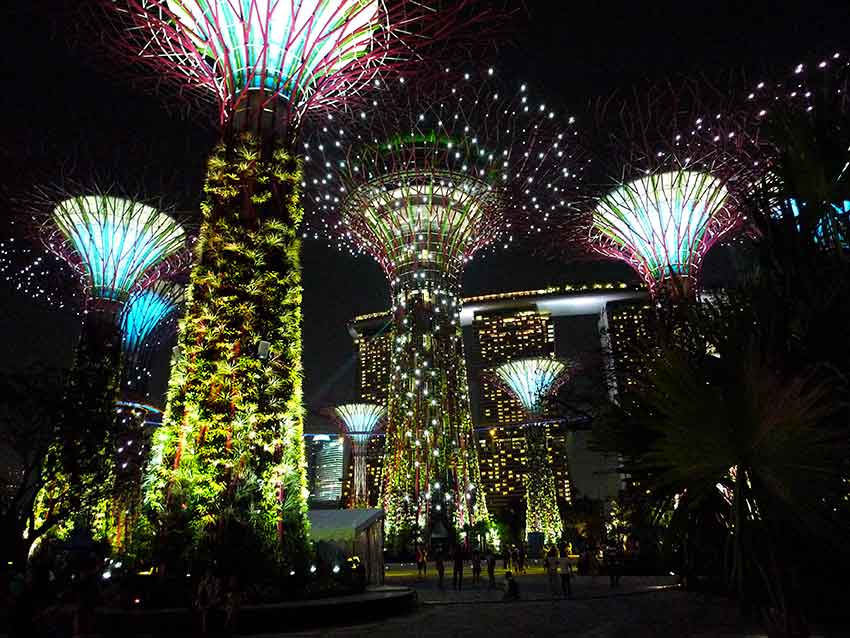Text by Jacobo García

Dystopia is a common theme in sci-fi literature, from classics such as the two little gems A Brave New World or 1984 are, to more recent times, with a novel I particularly would like to put in this category, Paul Auster’s In the Country of Last Things. Dystopia is so entrenched in science fiction that, on many occasions, it’s difficult to separate one from the other.
However, a young sci-fi sub-genre is bound to change this. Born in the catacombs of the internet: Tumblr blogs, Twitter, wikis and forums, SolarPunk breaks from the gloomy past of classic Sci-fi. Solar Punk is ready to provide a difficult but more optimistic version of the future. The infant genre is also poised to change our present. SolarPunk is the latest mutation of the CyberPunk and SteamPunk lineage. Its stories and visual imagery present a world where humans learn to live along with nature in a symbiotic and collective way. They do it by leveraging green technologies and ditching corrosive, environmentally harmful old ones.
SolarPunk embraces flair, solidarity, self-sufficiency and community. Its inhabitants don’t conform to traditional gender definitions. Race relationships are confronted from an honest, post-colonial perspective. The genre kicked off in 2012 in Brazil as a stories anthology titled Solarpunk – Histórias Ecológicas e Fantásticas em um Mundo Sustentável, which can be translated to Solarpunk: Ecological and Fantastic Stories in a Sustainable World.

Where CyberPunk presents mega-corporations abusing citizens, overruling governments and disrupting the state of law, SolarPunk sees self-reliant, human-built infrastructures bestowing resistance to greater powers and providing independence and support for climate-threatened communities. Where SteamPunk devises a carbon fossil-based transportation, cities clouted with pollution never seeing the sun’s light, SolarPunk imagines futuristic yet familiar designed human-powered vehicles, geodesic domes, vertical gardens and urban orchards.
Sci-fi has a long history of sexism and non-inclusivity, not only because, until recently, a few female writers have had the recognition of their male colleagues [1]. In part because the traditional science fiction themes have been growing – along with the rest of cultural genres- with topics that can appeal to a male audience. In this matter, SolarPunk is also a fresh breeze of air; characters come from many places, traditional genders sure, but also from any part of the LGTBIQ+ spectrum. Personal and sexual relations become intertwined with gender expectations, and plot twists come with the evolution of the characters’ sexualities. Families are not expected to exist in the atomic paradigm. The concept of family itself is challenged by diverse ways of association between humans, parents and motherhood not defined by traditional standards.

According to Jay Springett, one of the most regarded SolarPunk theorists, there is a set of cardinal differences between SolarPunk and traditional Sci-Fi. Solar Punk was born on the internet and developed there without a central authority or a literary canon defining the background and rules of the universe. Only a small corpus of books has been printed, mostly collections of short stories. Being originated on the internet, the visual component is as important as the writing itself. Browsing through SolarPunk dedicated websites, Tumblrs and forums, one can observe a mixture of real-life images taken out of their usual context. Stills from movies and video games, every imaginable type of fan art -even sketches and designs – all put together to frame a concept-art narrative.
Right now, SolarPunk kind of lives in financial limbo, still underground. But given its horizontal and open ethos (where everybody can contribute by starting their own website), there is a real concern about losing the central values of the genre. It’s not difficult to imagine a literary company appropriating it for-profit or a video game being released using the catchy name, eliminating on its way the defining values of SolarPunk.
One of the most critical attributes of science fiction is that it permeates the present, and in many cases, it advances the future. This can be illustrated by the recurring use of the maid’s uniforms in real life from Margaret Atwood’s The Handmaid’s Tale, used in demonstrations to defend women’s rights worldwide. Or maybe by a more dystopian view when a tech startup founder mentions in an interview that he started his company after reading a Sci-fi book. This is the precise reason we should pay attention to a genre that has often been regarded as childish fantasy.
Moreover, embracing a humanistic, climate change-aware, post-colonial, feminist, LGTBIQ+ supportive sci-fi genre that promotes eco-justice, ingenuity, creativity, and safety for everyone is significant today. We are facing an enormous climate emergency that will displace millions of people. The rights of collectives and minorities are either infringed, revoked or challenged in courts in every country of the world, nationalism is on the rise, and the list of challenges we face goes on and on. And precisely for the same reason that I mentioned in the previous paragraph –sci-fi permeates the present–we can imagine fairer, greener and unscathed futures. By adopting SolarPunk, we can turn the direction our present is headed towards a new future, perhaps even making the stories a self-fulfilling prophecy.
One thing is certain: We can’t solve the most important challenges the XXI century presents to our societies without embracing SolarPunk values.






